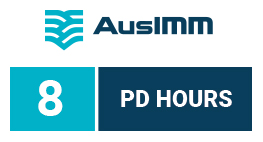Contamination characterization with multivariate geostatistics and sampling optimization | Training course
Learn how to reduce contamination map uncertainty by adding extra samples at appropriate locations on the site or using a multivariate geostatistical approach to integrate auxiliary data.
Objectives
- Understand and implement multivariate geostatistics to reduce estimation uncertainty by taking advantage of the correlation between in situ measurements (count or dose rate) and activity concentration or between easy-to-measure nuclides
and hard-to-detect nuclides. - Make the best use of all available data, quantitative and/or semi-quantitative.
- Perform coherent and simultaneous characterizations for multiple contaminations on the same site.
Outlines
- Half of the course is devoted to methodological presentations, the second half to practical exercises on real-life cases to deepen the understanding of concepts. Focus is on illustrations and practical contribution of the covered concepts.
- Computer exercises with Kartotrak.
- Course material provided.
Who should attend
Engineers, technicians, consultancies, project owners, prime contractors, public bodies, industrial operators who wish to go further with geostatistics.
Course content
Part 1: Map the contamination taking auxiliary data into account
- Analyze the correlations between the different types of available measurements, quantitative and semi-quantitative: count or dose rate, other nuclides, DEM, soil occupation, lithology, etc.
- Highlight the spatial relationships between variables: cross-variogram calculation and modeling.
- Integrate one or several secondary variables in the interpolation: find out more about the co-kriging and co-simulation principles and implement the methodologies.
- Compare the added value of the multivariate estimates to the univariate estimates.
Part 2: Optimize the density and location of sampling points
- Design the initial sampling plan: random, systematic, circular, judgmental.
- Compute the probability to reach a hot spot according to the sampling mesh and the expected contamination size.
- Optimize the number and location of additional data points to improve the initial characterization.
- Reduce false-negative risks for better waste classification.
Prerequisites
To have attended the course 2D mapping of radiological contaminations using geostatistics or have good basic knowledge in geostatistics (variography, kriging).


